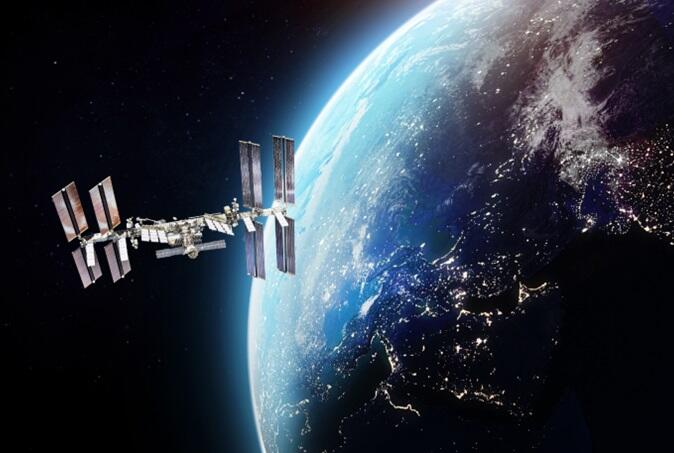The National Institute of Information and Communications Technology (NICT), the Graduate School of Engineering of the University of Tokyo, Sony Computer Science Laboratories, Next Generation Space Systems Technology Research Association, and SKY Perfect JSAT announced on April 18 that they have successfully demonstrated information-theoretically secure communication between the International Space Station (ISS) in low earth orbit and a portable optical ground station on the ground, sharing more than one million bits of secret key in a single pass over the ISS by optical communication. With this successful demonstration, the team of the five organizations have gained the technical prospect of sharing a high-speed, highly secure encryption key from a low earth orbit satellite with any ground station via optical communication. If this technology is put to practical use, it is expected to enable highly confidential communication of important information essential in the fields of national security and diplomacy as, in principle, secure encryption keys can be shared anywhere on the earth, preventing communication leaks.

Today, quantum computer research is advancing rapidly, and there is a growing concern that the realization of quantum computers will decrypt all data protected by conventional cryptography. Even if the encrypted data cannot be deciphered now, there is a growing fear of an attack in which the data stored for now is deciphered by a sophisticated computer that will be available in the future. Therefore, to securely exchange important confidential information in the future, it is an urgent issue to introduce cryptographic technology with information-theoretic security that cannot be deciphered by any computer.
In response to this need, NICT has been developing quantum key distribution and quantum cryptographic communication as a technology to enable such information-theoretically secure key sharing and secret communication. Currently, research and development is underway to further increase the speed and distance of quantum cryptographic communications in terrestrial optical fiber networks.
Specifically, the team is conducting research and development on the following: as a quantum key delivery network, a quantum key delivery device between two points on the ground within a 100-km range; and a quantum key delivery network based on trusted nodes. However, in order to expand quantum key delivery to a global scale, quantum cryptographic communications must be carried out performed across a distance of several thousand kilometers. To realize this, quantum relay technology, which is responsible for relaying in the middle of communication paths in terrestrial optical fiber networks, is necessary, and the team is currently waiting for its development. Meanwhile, the possibility of quantum key delivery using satellites, which does not require such ground-based relays, is also being explored. A successful satellite quantum key delivery experiment in China in 2017 led to the development of satellite quantum cryptography around the world. However, the limited number of keys that can be shared, the need for large ground stations, and other issues have hindered their practical application.
On this occasion, a research and development team of five organizations, including NICT, conducted research and development of physical layer cryptography, which enables more efficient key sharing by utilizing the nature of the line-of-sight communication channel between the satellite and the ground station, and demonstrated the technology in space. For the experiment, a low-orbit high-secrecy optical communication device, SeCRETS, was developed and installed on the Exposed Facility of the Japanese Experiment Module "Kibo" on the ISS. "SeCRETS" emitted a signal beam modulated with random data (key data) at a 10-GHz clock toward the ground. The signal beam was received by a 35-cm diameter reflecting telescope mounted on a portable optical ground station at the NICT headquarters in Koganei City, Tokyo Prefecture.
Then, to keep the amount of information leaked to signal wiretapping infinitesimally small, a key distillation process between the ISS and ground station of the received random number data was used to successfully generate a secure encryption key of more than 1 million bits in a single pass over the air. Furthermore, the distilled encryption key was used to one-time pad encrypt the photo data in orbit. The photo data was then transmitted to the ground via radio communication from the ISS and decrypted, which resulted in its successful acquisition.
The "SeCRETS" device was developed mostly using consumer components. Its functionality was confirmed through testing to operate without problems even in harsh environments such as low orbit. The optical telescope was mounted on a truck to form a portable optical ground station, and a tracking system with extremely fine tuning for the reception of high-speed modulated signals was also introduced.
In this demonstration study, optical transmission was limited to the area around the receiving station where security is ensured (physical layer encryption). In the future, the team will further develop the equipment to be incorporated into the cryptographic device and accelerate the production of a quantum key delivery device for on-board satellites by further verifying the results obtained here. In addition, research and development will be accelerated for developing a satellite bus system with a power system suitable for quantum key delivery demonstration and an attitude control system. Experimental demonstrations with the ISS and portable optical ground stations will also be further advanced to collect basic data to realize Japan's own satellite quantum cryptography.
This article has been translated by JST with permission from The Science News Ltd. (https://sci-news.co.jp/). Unauthorized reproduction of the article and photographs is prohibited.




